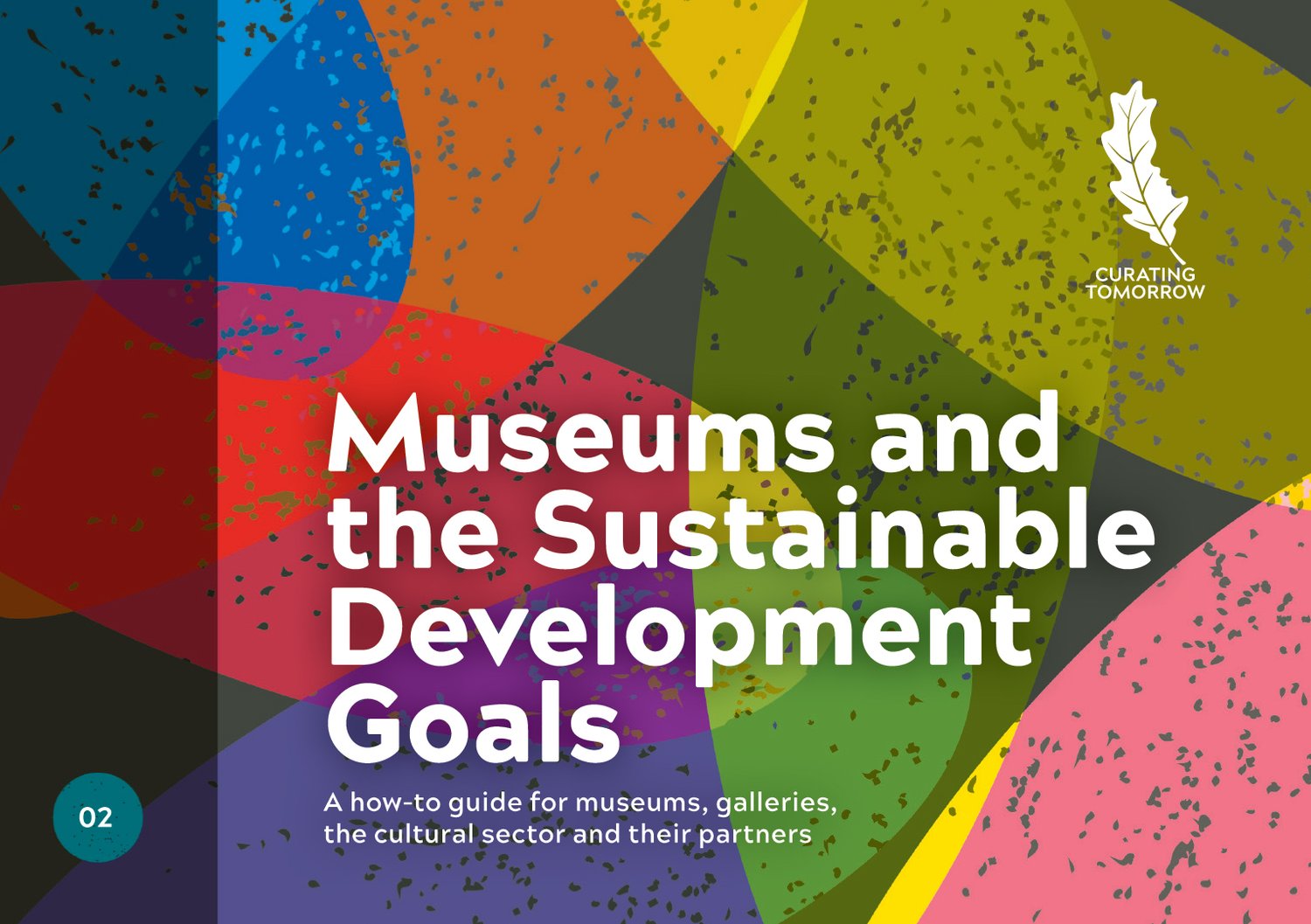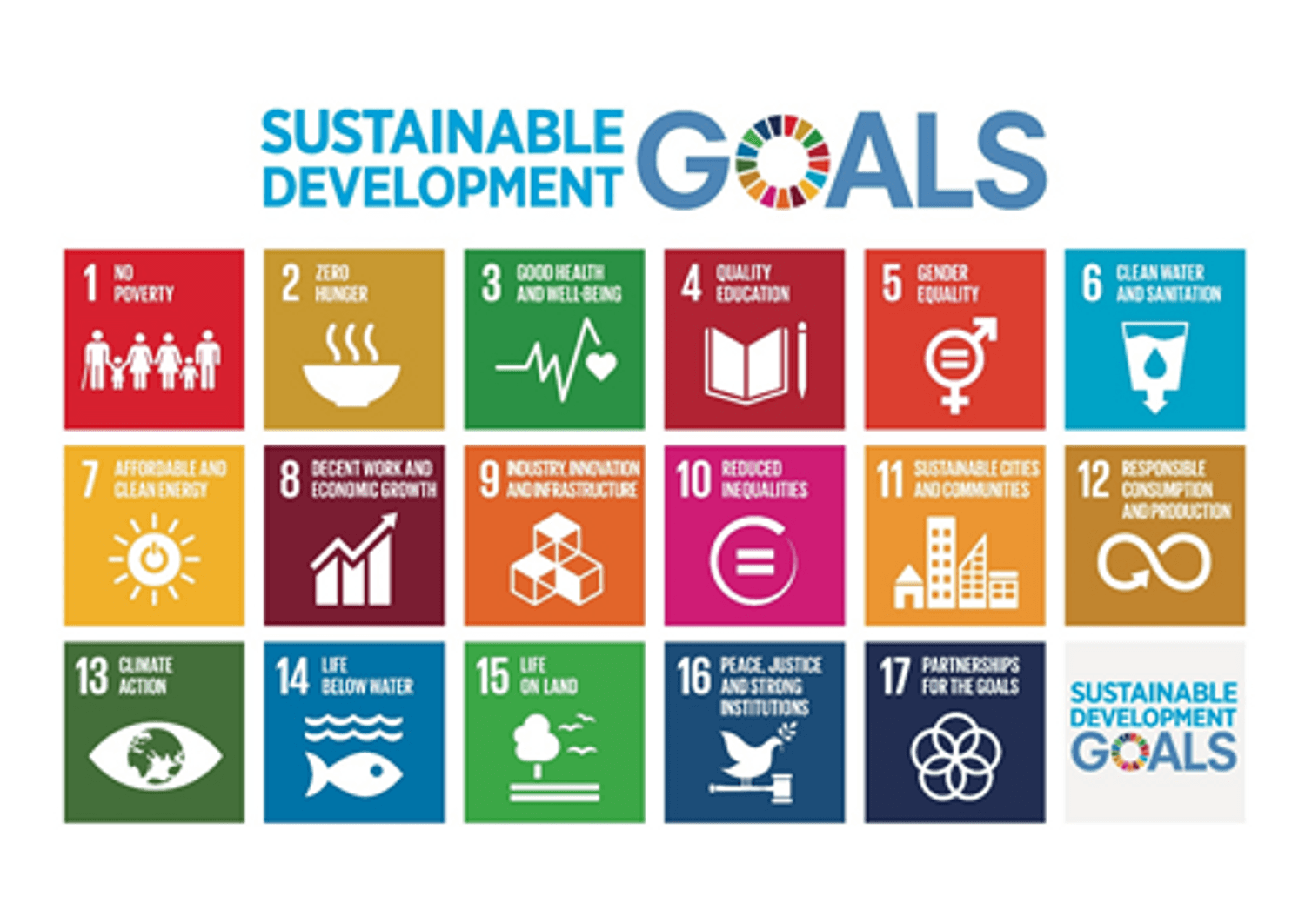How can museums help put the world on a path to a sustainable future, through working to support the Sustainable Development Goals?
'Museums and the Sustainable Development Goals: a how-to guide for museums, galleries, the cultural sector and their partners' was produced in 2019 to help museums and their partners to enhance their contributions to sustainable development, using the SDGs as a template.

Agenda 2030 and the Sustainable Development Goals were agreed by the members of the United Nations in 2015 as a shared plan for people, planet and prosperity. The 17 Sustainable Development Goals and their 169 targets are the blueprint for all sectors, and all countries, to work together in the common endeavour of securing a future that respects human rights, ensures people can lead lives in dignity, and in a safe and secure natural environment. Climate change is the subject of SDG 13, 'Take urgent climate action', but climate change relates to all of the SDGs: all SDGs are threatened by climate change, and climate action can support all 17 SDG and the overall agenda. This guide explores the SDGs and how museums can contribute towards them, using a framework of seven key activities:
1. Protect and safeguard the world’s cultural and natural heritage, both within museums and more generally
2. Support and provide learning opportunities in support of the SDGs
3. Enable cultural participation for all
4. Support sustainable tourism
5. Enable research in support of the SDGs
6. Direct internal leadership, management and operations to support the SDGs
7. Direct external leadership, collaboration and partnerships towards the SDGs
This framework is aligned with roughly 1/3 of all SDG targets.
The SDGs are not just for governments: they are an invitation to all sectors of society, in all places, to collaborate and participate in the achievement of the 2030 Agenda. The SDGs are an incredible opportunity for anyone, any organisation, and any sector to collaborate in pursuit of common goals, levering their skills, capacities and unique resources. Museums have a great deal to offer this Agenda, and some of the SDGs will not be achieved without museums. This guide aims to help museums, and you, play your part. There is no single right way to contribute to the SDGs and, so long as the principles of sustainability are followed, no wrong way. The SDGs are also not about continuing with business as usual, but about clear, committed, focused action to enhance positive impacts and reduce negative impacts.
The SDGs are anchored in the principles of
1) protecting and promoting human rights and environmental rights, which underpin the possibility for dignity, peace and sustainable development;
2) equality, as reducing inequalities is essential for protecting and promoting human rights, and tackling discrimination and exclusion;
and
3) sustainability, through a long-term perspective to accommodate intergenerational equity, justice and a world fit for present and future generations.
Importantly, the SDGs follow a principle of 4) ‘leave no-one behind’.

Why the SDGs need museums
The SDGs are a call to all sectors of society. They need museums’ involvement to succeed, as museums have unique resources and key roles to play.
1. Museums preserve cultural and natural heritage in the form of collections and associated knowledge. These form the basis of a wide range of learning and research programmes that can support the SDGs, and the preservation of cultural and natural heritage beyond museums.
2. Museums reach very large numbers of people for formal and informal learning, and already deliver many programmes that align with the SDGs. They foster many people’s interest in, concern for, and ability to address issues relating to the SDGs. Museums can play a crucial role in enhancing public education and participation with the SDGs.
3. Museums can support cultural participation. Cultural participation helps ensure that all people of all abilities, and from all backgrounds, have the opportunity to participate fully in society. As museums provide services for people, they can contribute to many SDGs by ensuring that their services consider and are accessible to the full breadth of society. Museums can bring people together, from similar backgrounds and interests, and from different backgrounds and interests, promoting fair, tolerant and just societies.
4. Museums are trusted by large numbers of people, and this trust can help further the SDG Agenda. Museums can support people to explore challenges relating to the SDGs, and to promote fair, tolerant and just societies. Trust enables us to go from the known to the unknown.
5. Museums can make a significant contribution to local economies, notably in areas of poverty or where particular groups of people are marginalised, helping address social and economic inequalities.
6. Museums make a significant impact through their operations and use of resources; they can make a direct contribution to the SDGs through their activities relating to personnel, finance and operations, enhancing positive impacts and steadily reducing negative impacts.
7. Museums can participate in, facilitate and initiate cross-sectoral partnerships and play a leading role in pursuit of the SDGs. Museums enjoy a great deal of freedom, and can use this freedom to support positive interactions between different stakeholder groups and to address real-world challenges (both local and global). In many societies, arguably no sector is better placed or better able to do this, helping bridge the gap between policy/strategy and people’s individual lived experience, and providing opportunities for people to input into the development of policies and strategies that affect the lives of them and others.
Why museums need the SDGs
The SDGs are a global framework, with increasingly strong buy-in from a wide
range of sectors, notably from funding agencies and governments. Museums can benefit from engaging with the SDGs. Connecting with the SDGs will help museums in the following ways:
1. Shape their programmes to provide people interested in social and environmental topics with educational and participatory activities.
2. Put their unique resources to good use in pursuit of positive social and environmental outcomes.
3. Play a significant and distinctive part in an ambitious global agenda.
4. Build partnerships and collaborations.
5. Create and demonstrate impact.
You can explore 'Museums and the Sustainable Development Goals' here.
